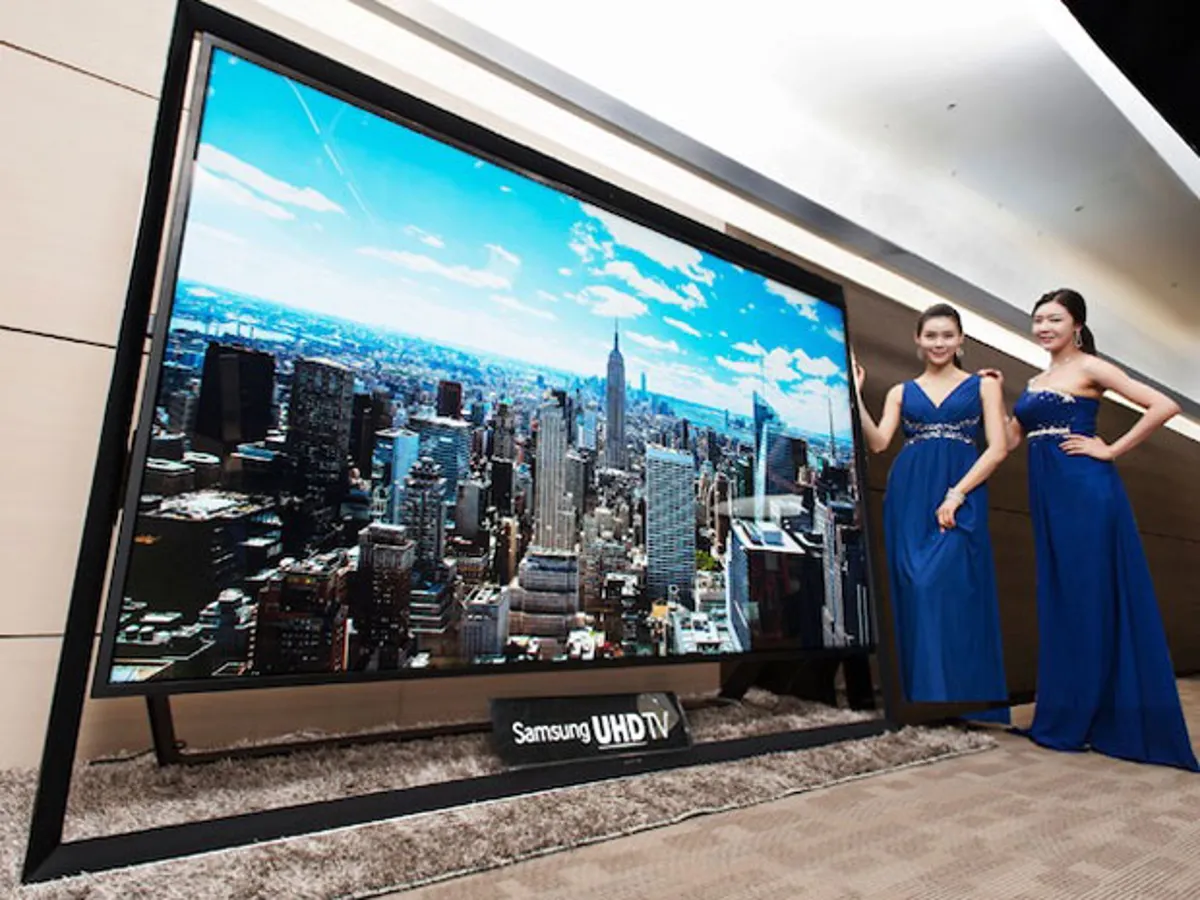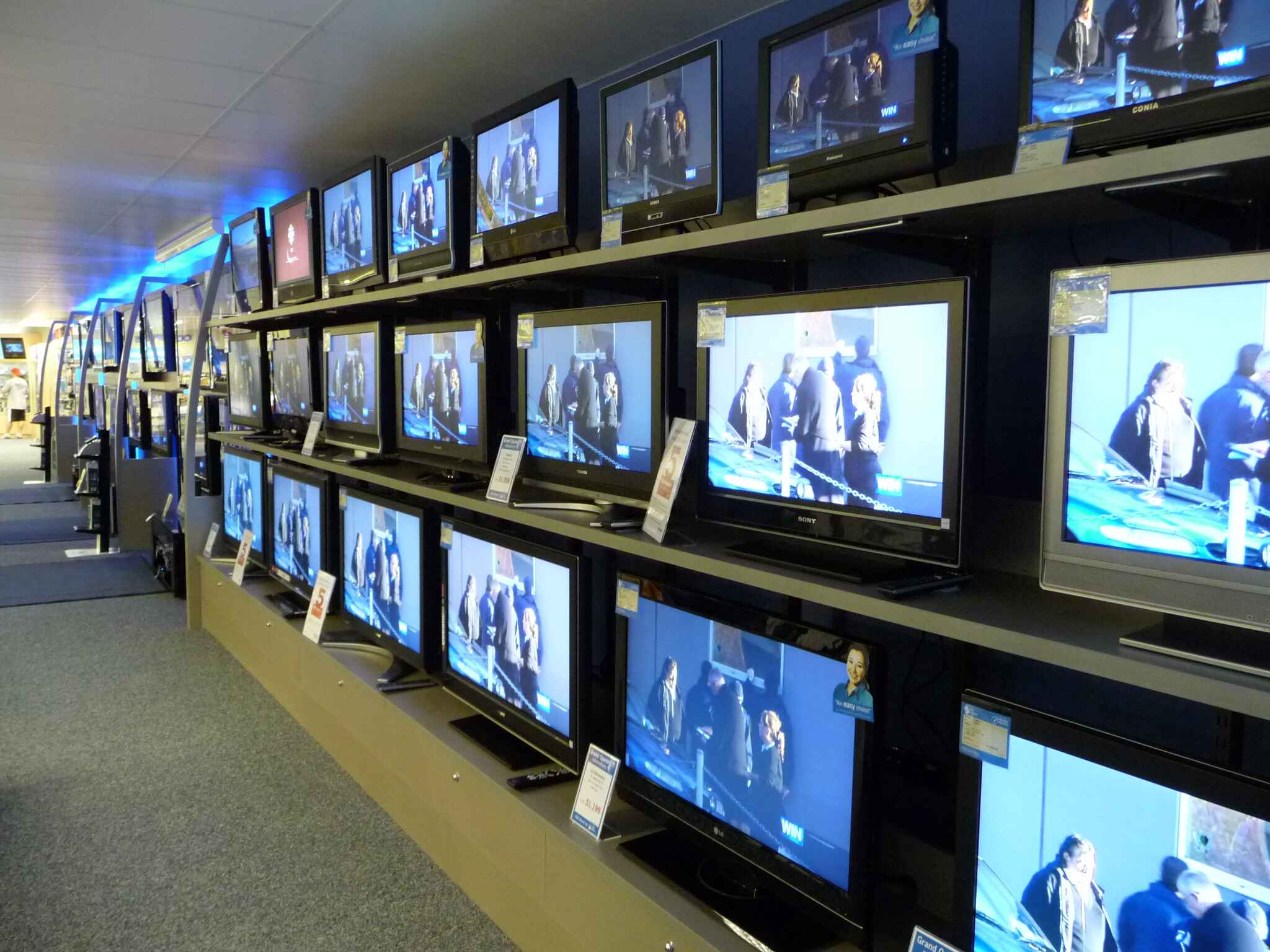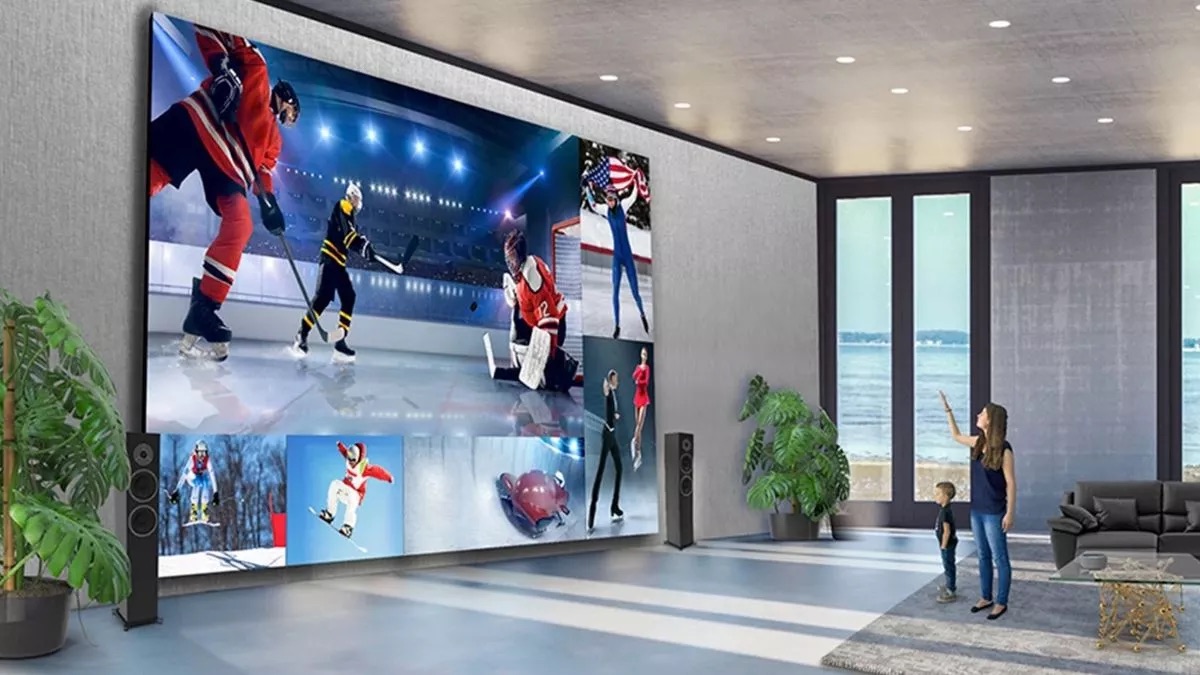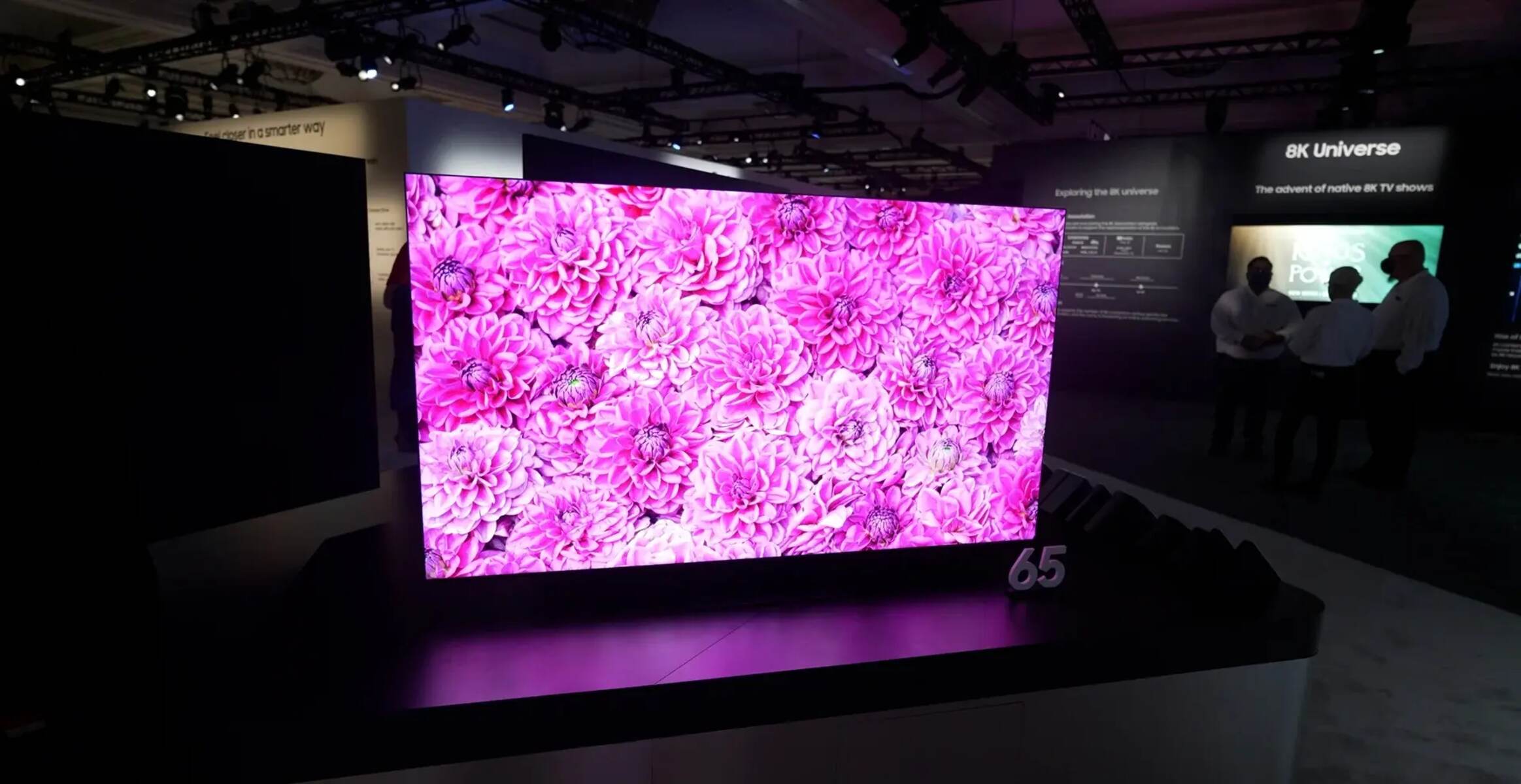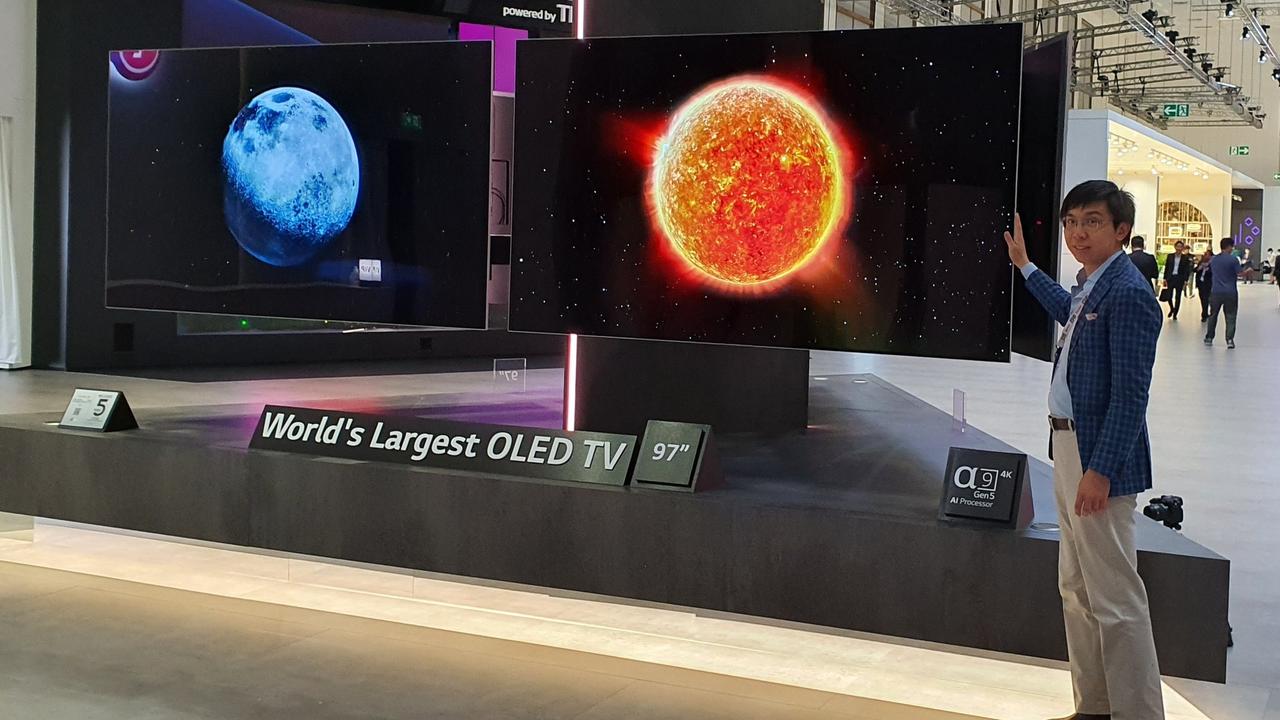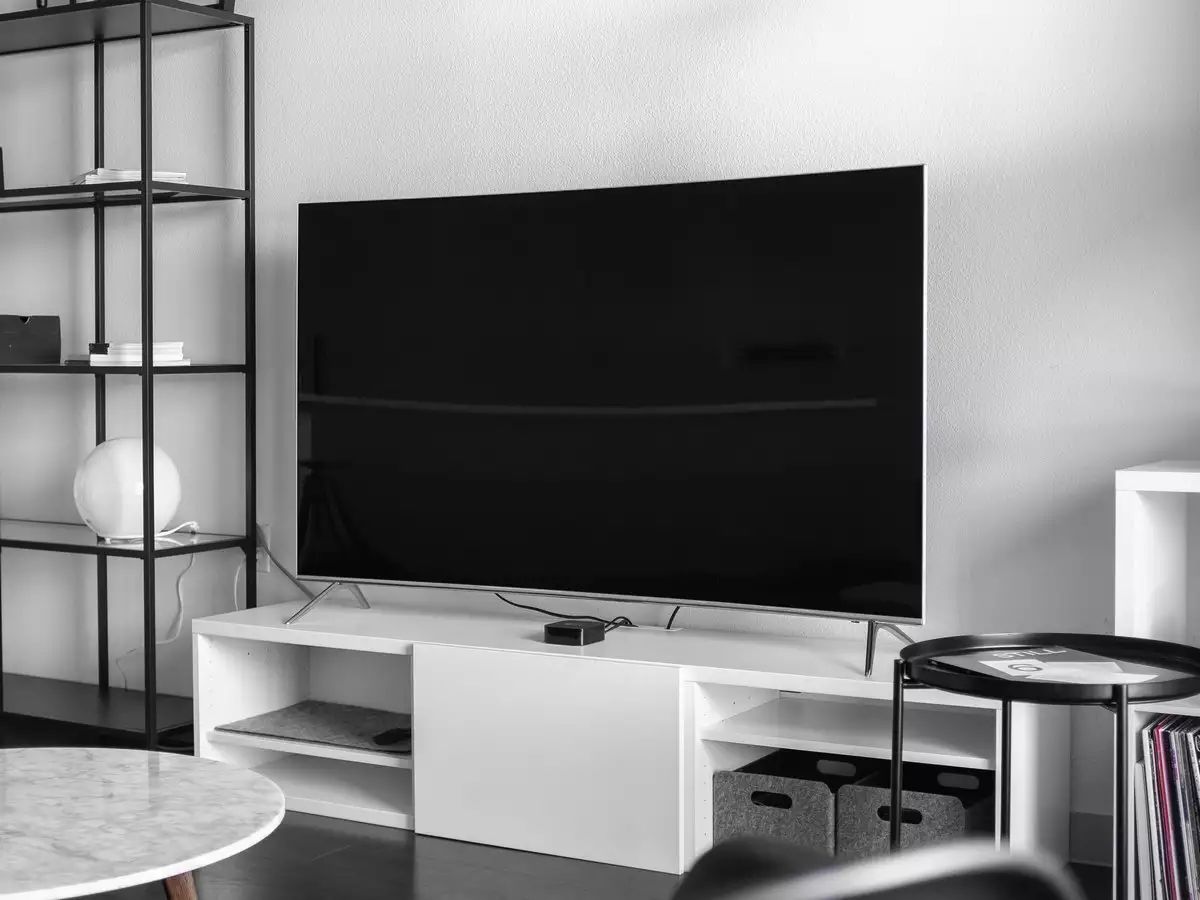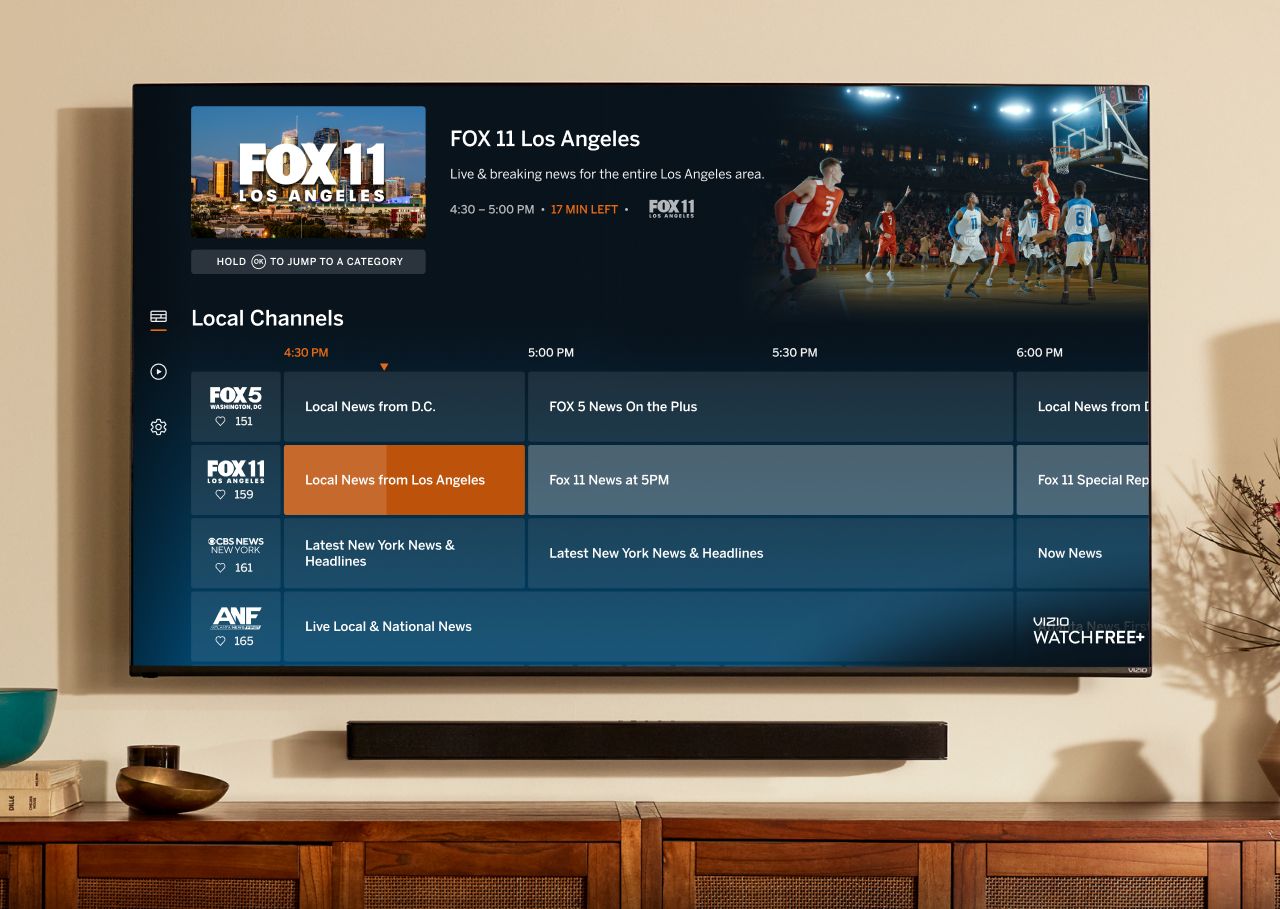Introduction
A smart TV is a technological marvel that has revolutionized the way we consume entertainment. With the ability to connect to the internet and access a wide range of apps and streaming services, a smart TV offers unparalleled convenience and an immersive viewing experience. However, when it comes to choosing a smart TV, the size of the screen plays a crucial role in determining the overall enjoyment and comfort of the viewing experience.
A larger screen size allows for more detailed visuals, making it easier to see every intricate detail in movies, TV shows, and games. It can also create a more immersive experience, transporting viewers into the world being portrayed on the screen. Whether you are a movie enthusiast, a sports fan, or a gamer, having a large-screen smart TV can enhance your entertainment experience and make it more enjoyable.
When it comes to smart TVs, bigger doesn’t always mean better. While a larger screen can provide a more immersive experience, it also has its drawbacks. It requires more space, both in terms of physical room and viewing distance, to fully appreciate the benefits of a larger screen. Additionally, a larger screen might not be suitable for smaller living spaces or rooms with limited seating arrangements.
In this article, we will explore the various factors to consider when choosing the largest smart TV for your home, including the impact of screen size on the viewing experience. We will also discuss the current largest smart TV on the market and whether bigger screen sizes always translate to a better viewing experience. So, let’s dive in and find out what you need to know before investing in a large-screen smart TV.
The Definition of a Smart TV
A smart TV, also known as a connected TV or hybrid TV, is a television set that is equipped with internet connectivity and integrates various features and functionalities typically found on computers and mobile devices. This allows users to access streaming services, browse the internet, play games, and interact with a wide range of applications.
Unlike traditional televisions, which rely on broadcast signals or cable/satellite connections, smart TVs connect directly to the internet, either through an Ethernet cable or a Wi-Fi connection. This connectivity enables users to access a vast array of online content, including popular streaming services like Netflix, Hulu, and Amazon Prime Video.
Smart TVs are typically equipped with a user-friendly interface that provides easy navigation through the different apps and features. They often come with a remote control or a mobile app that allows users to control the TV’s functions conveniently. Some smart TVs also offer voice control or gesture recognition, providing even more intuitive ways to interact with the device.
One of the key features of a smart TV is its ability to install and run various applications. These applications, commonly known as apps, extend the functionality of the TV beyond traditional broadcasting. Users can download apps for streaming media, social media, gaming, productivity, and much more. This personalized app experience allows users to tailor their TV viewing according to their preferences and interests.
In addition to accessing online content and applications, smart TVs often come with other smart features, such as screen mirroring, which enables users to display content from their mobile devices directly on the TV screen. Some smart TVs also have built-in cameras for video calling or motion-sensing capabilities for gaming.
Overall, a smart TV combines the benefits of a traditional television with the versatility and interactivity of the internet and smart devices. It brings a wealth of entertainment options and features right to your living room, providing a seamless and immersive viewing experience.
Why Size Matters
When it comes to choosing a smart TV, size matters more than you might think. The size of the screen directly impacts your viewing experience and can make a significant difference in how you enjoy movies, TV shows, and games. Here are a few reasons why size matters when it comes to selecting the perfect smart TV for your home:
Immersive Experience: A larger screen provides a more immersive experience, making you feel like you’re part of the action. It fills your field of vision and creates a sense of being in the movie or game world. The larger the screen, the more captivating and engrossing the visuals become.
Enhanced Detail: With a larger screen, you can see more details in the visuals. Whether it’s watching a beautiful landscape or examining the intricate designs of a costume, a bigger screen unravels the hidden details that might be missed on a smaller display.
Better Gaming Experience: Gamers often prefer larger screens to fully appreciate the graphics and immerse themselves in the virtual world. A larger screen not only provides a wider field of view but also allows for better visibility of small details and enhances the overall gaming experience.
Comfortable Viewing: Watching content for an extended period can strain your eyes and neck. A larger screen allows you to maintain a comfortable viewing distance while still enjoying the visuals. You won’t have to squint or strain your eyes to see what’s happening on a bigger screen, reducing eye fatigue.
Group Entertainment: If you often enjoy movies or TV shows with family and friends, a larger screen ensures that everyone has a good view, no matter where they are sitting. It creates a shared experience that brings people closer and enhances the enjoyment of group entertainment.
Visual Impact: Let’s face it, a large-screen smart TV is visually impressive. It becomes the focal point of the room, adding a touch of elegance and sophistication to your home decor. It can elevate the overall visual aesthetic of your living space.
While a larger screen has its advantages, it’s essential to consider the available space in your home. Ensure that you have enough space to accommodate the TV and maintain an appropriate viewing distance. Measure the room dimensions and consider the seating arrangement to determine the ideal screen size that fits your space. Balance your desire for a large-screen viewing experience with practicality.
Now that you understand why size matters let’s explore the factors to consider when choosing the largest smart TV for your home.
Factors to Consider When Choosing the Largest Smart TV
Choosing the largest smart TV for your home can be an exciting yet challenging task. With numerous options available in the market, it’s important to consider several factors before making your decision. Here are some essential factors to keep in mind when selecting the perfect large-screen smart TV:
Room Size: Assess the size of the room where you plan to install the smart TV. The screen size should be proportional to the room size to ensure optimal viewing experience. If the room is small, a gigantic screen may overwhelm the space. On the other hand, a large room can accommodate a larger-sized screen without compromising the viewing experience.
Viewing Distance: Determine the ideal viewing distance based on the screen size. The proper viewing distance ensures that you can comfortably see the content without any discomfort or strain. As a general guideline, multiply the screen size (diagonal) by 1.5 to 2.5 to get an approximate range of the optimal viewing distance.
Resolution: Consider the screen resolution of the smart TV. Higher resolution, such as 4K or 8K, provides sharper and more detailed visuals. If you’re investing in a large-screen TV, a higher resolution will allow you to fully appreciate the finer details and clarity of the content.
Screen Technology: Various screen technologies, such as LCD, LED, OLED, and QLED, offer different display qualities. OLED and QLED screens, known for their vibrant colors, deeper blacks, and wider viewing angles, are often preferred for larger screens. However, they might come with a higher price tag. Consider your budget and preferences when selecting the screen technology.
Smart Features: Evaluate the smart features and functionalities that the TV offers. Look for a smart TV with a user-friendly interface, access to popular streaming services, and a wide range of apps. Consider additional features like voice control, built-in streaming platforms, and connectivity options that enhance convenience and expand your entertainment choices.
Sound Quality: The size of the TV might also impact the audio experience. Larger screens often come with built-in speakers that provide better sound output. However, for a truly immersive experience, consider investing in external speakers or a soundbar to complement the visuals with superior audio quality.
Budget: Set a budget that fits your financial capacity and prioritize the factors that are most important to you. Determine your maximum spending limit and explore options within that range. Remember to consider the long-term investment and the overall value you will get from the smart TV.
Reviews and Ratings: Before making a final decision, read reviews and ratings of the smart TV model you are interested in. This will help you gather insights and feedback from other users who have already tested the product. Consider factors like durability, performance, and customer support to make an informed choice.
By considering these factors, you can choose the largest smart TV that best suits your viewing preferences, room size, and budget. Next, let’s explore the current largest smart TV available in the market and its features.
The Current Largest Smart TV on the Market
As technology continues to advance, smart TVs are becoming bigger and more impressive than ever before. At present, one of the largest smart TVs available on the market is the Samsung QN900A Neo QLED 8K TV. This colossal television boasts a whopping 85-inch screen size, offering a truly immersive viewing experience.
The Samsung QN900A features cutting-edge Neo QLED technology, which utilizes tiny micro-layered Quantum dots to produce vibrant colors, deep blacks, and exceptional contrast. The 8K resolution delivers breathtaking detail, making even the smallest elements on the screen come to life. With its Quantum HDR 64x and Direct Full Array Elite technology, this TV offers an incredible range of brightness and precise backlight control.
In terms of design, the Samsung QN900A is sleek and minimalist, with a near bezel-less Infinity Screen that maximizes the viewing area. It also comes with an ultra-slim One Connect box that connects all external devices, reducing cable clutter and making installation a breeze.
As a smart TV, the Samsung QN900A runs on the Tizen operating system, providing a seamless and user-friendly interface. It includes popular streaming services like Netflix, Disney+, and Amazon Prime Video, along with a wide selection of apps available for download. The TV also supports voice control, allowing users to navigate through content and control their devices with simple voice commands.
With the Samsung QN900A, you can enjoy a truly cinematic experience right in the comfort of your home. Whether you’re watching movies, binge-watching your favorite TV shows, or playing immersive video games, this TV’s massive screen size and exceptional picture quality will transport you into a world of entertainment.
However, it’s important to note that the Samsung QN900A is a high-end TV with a corresponding price tag. It may not be suitable for everyone’s budget or living space. Before making a purchase, consider your room size, viewing distance, and personal preferences to ensure the TV fits your requirements.
With the Samsung QN900A Neo QLED 8K TV and other similar large-screen offerings from different brands, you now have the opportunity to bring the ultimate home theater experience into your living room. The size and power of these TVs create a stunning visual presence that will surely impress anyone who lays eyes on them.
Now that we’ve explored the current largest smart TV on the market, let’s delve into the impact of screen sizes on the overall viewing experience.
The Impact of Screen Sizes on Viewing Experience
The size of the screen on a smart TV has a significant impact on the overall viewing experience. Here are some factors to consider when it comes to the impact of screen sizes:
Immersiveness: A larger screen size enhances the sense of immersion, making you feel more engaged with the content. Whether you’re watching an action-packed movie or playing a thrilling video game, a bigger screen fills your field of vision and draws you into the on-screen action.
Detail and Clarity: With a larger screen, you can see more details and appreciate the finer aspects of the visuals. Whether it’s the intricate details in the costumes of your favorite characters or the breathtaking landscapes in nature documentaries, a bigger screen allows for a more immersive and captivating experience.
Viewing Distance: The size of the screen also affects the optimal viewing distance. For larger screens, you need to sit further back to have a comfortable viewing experience. Sitting too close to a large screen may result in strain on the eyes and a distorted perception of the visuals. It’s important to maintain the appropriate viewing distance to fully enjoy the content without discomfort.
Room Size and Seating Arrangement: Consider the size of the room where you will be placing the TV. A large TV may require more space to accommodate both the screen and the optimal distance for viewing. Additionally, consider the seating arrangement to ensure that everyone in the room has a good view and can enjoy the content without obstruction.
Content Quality and Source: The impact of screen size can be more pronounced when viewing high-resolution content, such as 4K or 8K videos. With a larger screen, the increased pixel density allows for sharper and more detailed images, enhancing your viewing experience. However, keep in mind that the content itself and its source quality also play a significant role in the overall image quality.
Personal Preference: Ultimately, the impact of screen sizes on the viewing experience can vary from person to person. Some individuals may prefer a more intimate and cozy experience with a smaller screen, while others may enjoy the theatrical feel and immersive experience of a larger screen. It’s important to consider your personal preferences and comfort when choosing the screen size that suits you best.
While a larger screen size does offer advantages, it’s crucial to find the right balance between the screen size and the viewing distance to avoid strain on your eyes. Remember to consider your room size, seating arrangement, and personal preferences when selecting the ideal screen size for your smart TV.
With this understanding of the impact of screen sizes, let’s now explore whether bigger is always better when it comes to choosing a smart TV.
Is Bigger Always Better?
When it comes to choosing a smart TV, the question arises: is bigger always better? While a larger screen size can offer certain advantages, it’s important to consider individual preferences, viewing habits, and the limitations of your living space. Here are a few points to ponder:
Room Size: The size of your room plays a significant role in determining the ideal screen size. A massive TV in a small room can be overwhelming and may make it difficult to find a comfortable viewing distance. Consider the proportions of your room and opt for a screen size that complements the space.
Viewing Distance: Sitting too close to a large screen can lead to eye strain or an immersive experience that is too overwhelming. On the other hand, sitting too far from a small screen may compromise your ability to fully appreciate the content. Finding the right balance between screen size and viewing distance is crucial to ensuring an enjoyable viewing experience.
Content Type: The type of content you consume also affects the impact of screen size. For example, if you mainly watch movies or play video games that prioritize visuals and detail, a larger screen can enhance the immersive experience. However, if you primarily watch news or browse the internet, a smaller screen may be more sufficient for your needs.
Seating Arrangement: Consider the seating arrangement and the number of people who will be watching the TV simultaneously. If you frequently enjoy movie nights with family and friends, having a larger screen size can ensure that everyone has a clear view of the content without compromising their comfort.
Personal Preference: Ultimately, personal preference plays a significant role in determining the ideal screen size. Some individuals may prefer the aesthetic appeal and immersive experience of a larger screen, while others may prioritize practicality and choose a smaller screen that fits their living space and viewing habits.
Cost: Bigger screens often come with a higher price tag. Consider your budget and weigh the cost-to-value ratio of investing in a larger screen. It’s essential to find a balance between screen size, features, and overall quality to ensure a satisfying viewing experience within your budget.
While a larger screen can offer more immersive visuals and a cinematic experience, it’s not always the better choice for everyone. Assess your personal preferences, viewing habits, and living space to determine the ideal screen size that will provide the best balance between comfort, enjoyment, and practicality.
Now that we’ve considered the factors influencing the choice of screen size, let’s summarize the key points and conclude our discussion on selecting the largest smart TV for your home.
Conclusion
Choosing the largest smart TV for your home is an exciting decision that can greatly enhance your entertainment experience. However, it’s important to consider several factors to ensure that you make the right choice. The size of the screen, while important, is not the only factor to consider.
Consider the dimensions of your room, the optimal viewing distance, and the type of content you enjoy. Take into account your personal preferences, the seating arrangement, and your budget. Strive to strike a balance between a screen size that offers an immersive experience and practicality within your living space.
While a larger screen can provide a more immersive and detailed viewing experience, it may not necessarily be the best choice for everyone. It’s essential to consider the limitations of your living space and the viewing distance required for a comfortable experience. Remember that different individuals have different preferences and needs.
Take advantage of the advancements in technology and explore the various features and functionalities offered by different smart TV models. Consider factors like screen resolution, smart features, sound quality, and the overall value for money.
By carefully considering all these factors, you can choose the largest smart TV that suits your needs and preferences. Whether you opt for a massive 85-inch TV for a home theater experience or a smaller screen that perfectly fits your cozy living room, the right choice will enhance your entertainment enjoyment and bring a new level of immersion to your viewing experience.
So, take your time, do your research, and make an informed decision. With the perfect large-screen smart TV, you can create your own personal theater at home and enjoy countless hours of entertainment in style and comfort.







